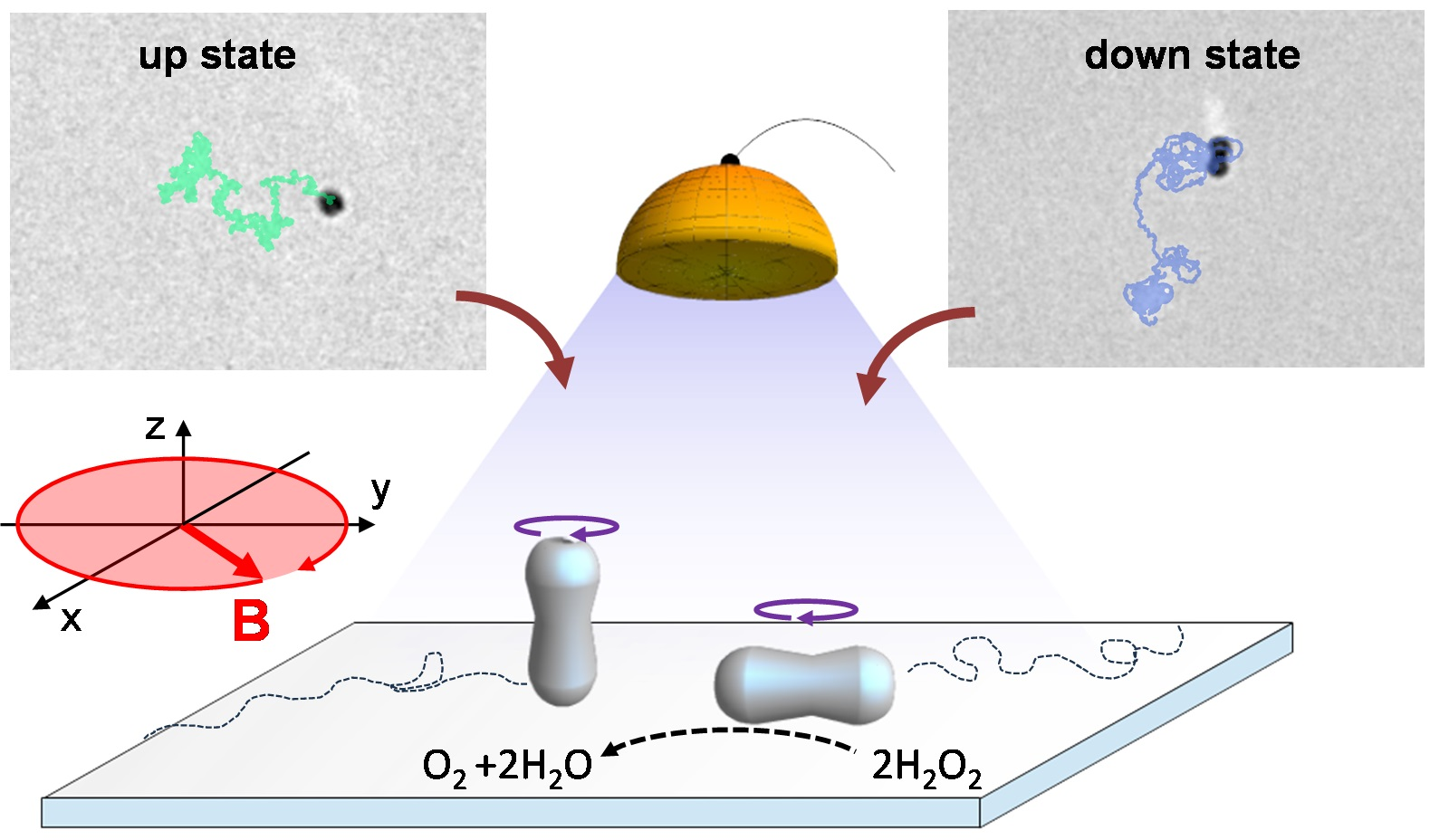Recent highlights
Activity affects the transition of up and down dynamic states
Background & motivation: Magnetic nanorotors have long been recognized for their versatility in fluid dynamics and biomedical applications, but they have traditionally relied on external forces, limiting their functionality to planar motion. This study breaks new ground by introducing an active magnetic microgyroscope driven by both a rotating magnetic field and a photoactivated catalytic reaction. By enabling self-propulsion in addition to rotational dynamics, these gyroscopes overcome the passive limitations of conventional systems and provide additional control over precessional and translational motion. This innovation paves the way for enhanced applications in microfluidics, microrheology and beyond, where active, autonomous functionality is critical for the next generation of nanotechnologies.
Figure: An active magnetic microstirrer realized by using a hematite particle subjected to the combined action of a photoactivated catalytic reaction and a rotating magnetic field displays two dynamic states: rotating in a plane parallel to the substrate or standing up and precessing around its short axis.
Findings: The study demonstrates the realization of an active magnetic microgyroscope powered by dual actuation mechanisms: a rotating magnetic field for spinning and a photoactivated catalytic reaction for self-propulsion. The combination of these forces enables unique dynamics, including enhanced uplift behavior, where the activity from phoretic and osmotic forces contributes a gravitational-like torque that raises the threshold field amplitude required for uplift. Remarkably, the rotational motion suppresses self-propulsion compared to cases without a magnetic field, highlighting the interplay between spinning and translational dynamics. Furthermore, by modulating the field amplitude, we induced hysteresis loops in the uplift process, showcasing precise tunability. This innovation positions active microgyroscopes as versatile agents for microfluidic systems, combining rotational stirring with translational motion to surpass the capabilities of traditional passive rotors.
Publication:
D. Boniface, A.V. Straube, P. Tierno,
Photocatalytic magnetic microgyroscopes with activity-tunable precessional dynamics,
Nano Lett. 24, 14950 (2024) (open access)
